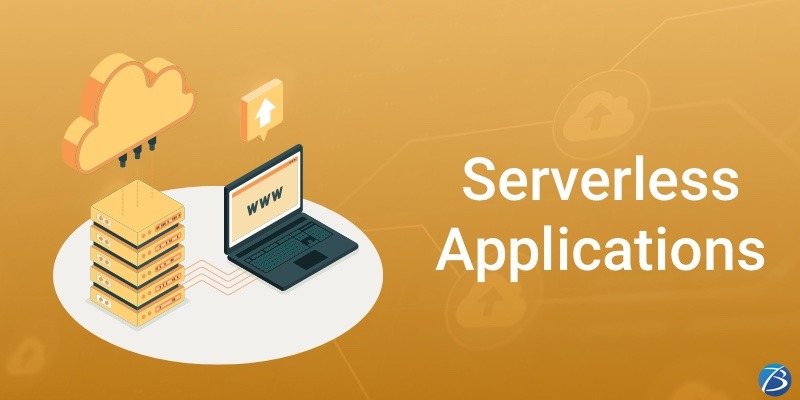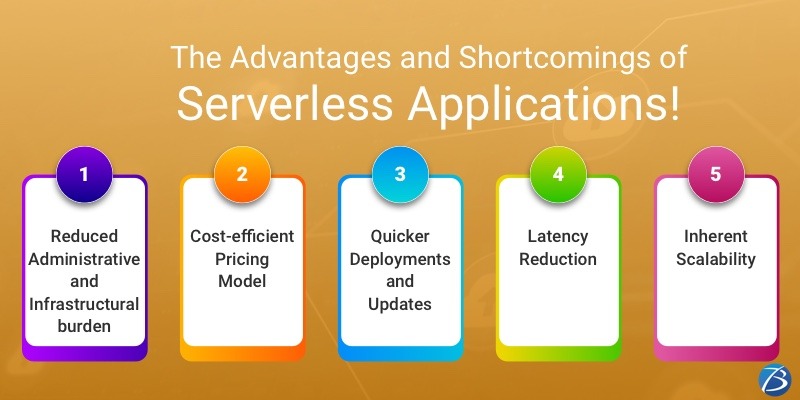ALL >> General >> View Article
The Advantages And Shortcomings Of Serverless Applications!

Serverless App Development is the latest trend in the IT sector! Yet, several questions arise in the minds of entrepreneurs planning to execute serverless architecture for their next app development project.
What is serverless architecture?
How is the serverless model different from other prevalent cloud computing models?
What are the opportunities and obstacles of serverless applications?
Is my business going to benefit from the serverless computing model?
Well, this article answers all the aforesaid questions! So, let’s commence.
What is serverless architecture?
Serverless architecture refers to a software design pattern in which a third-party service hosts the applications; so that the developers need not engage in the task of managing the server software and hardware. This approach is also known as serverless computing as the app logic gets implemented in an eco-system wherein servers, OS, and virtual machines are not visible. This doesn’t ...
... mean that servers are not used at all. The app logic is executed on an OS that uses physical servers. But, the difference with other cloud services is that; here the service provider wholly takes up the responsibility of infrastructure management and so the mobile app developer can focus only on writing codes.
Categories of Serverless Applications:
FaaS (Function as a Service/Feature as a Service), the serverless model enables developers to build, run and manage the app functionalities; without having to create or maintain the infrastructure needed for developing and launching the app. The first FaaS service provider was AWS Lambda by Amazon, followed by several others like Microsoft Azure, Google Cloud Functions, etc.
PaaS (Platform as a Service), another category of cloud computing, bears similarity with FaaS as they too hide servers from developers. But, unlike FaaS this service runs one server process continually for receiving external requests. The app is scaled by booting up more server processors, for which the developer is charged and so the scalability is visible to the developer.
BaaS (Backend as a Service), is another prominent model which addresses the cloud-computing requirements for the mobile and web app developers by offering them a unified means of connecting their apps to cloud computing services. As such, BaaS automates the development of the backend for the web and mobile and also manages the cloud infrastructure. This enables the mobile and web app development companies to only focus on the frontend part of the application.
Serverless Applications: Advantages

Reduced Administrative and Infrastructural burden
The hassle of managing servers passes on to the vendor, resulting in the following benefits for a mobile and web app development company.
• Firms need not spend a huge amount on the hardware or hire engineers for maintaining that hardware.
• More time and resources can be dedicated to creating and improving customer-facing features.
• Developers have the flexibility of crafting and scaling the apps as required; without having to worry about the constraint of server capacity.
Cost-efficient Pricing Model
In traditional server-full architectural setups, developers have to figure out in advance the amount of server capacity needed; based on which the company purchases the capacity whether or not they end up using it. However, serverless setups follow the “pay-as-you-go” policy which means the vendor charges the company only for the amount of server space they use. The code runs whenever the serverless application needs backend functions and gets automatically scaled up whenever required. Also, provisioning is precise, dynamic, and happens in real-time. As FaaS charges a fraction of the price per request, a start-up can build an MVP at minimal cost without having to pay huge bills for lesser traffic.
Quicker Deployments and Updates
The serverless model eliminates the tasks of uploading the code to servers or engaging in any backend configuration for releasing a fully functional app. Hence, developers can speedily upload bits of code and launch a new app. As the app is a collection of functions provisioned by the service provider, rather than being a single monolithic stack; developers can either upload the entire code at one go or upload one function at a time. This ability speeds up the tasks of fixing, patching, or updating the app without any need to make changes in the entire application.
Latency Reduction
Since the app does not get hosted in the origin server, it becomes possible to run its code from anywhere. As such, the app’s functions can be run on servers that are close to the end-user depending on the vendor selected. This strategy reduces latency as the requests coming from the user need not travel a long way to reach an origin server.
Inherent Scalability
Serverless applications are capable of scaling automatically with the increase in the number of user base or usage. If a function requires to be run several times, the vendor’s servers will start, run and end them as required using separate containers. This provides the ability to handle a higher number of requests effectively as compared to a traditionally structured app.
Serverless Applications: Downsides
• As the vendor fully controls the operations, a firm has to abide by their rules. For instance, if your app is set in Lambda it’s not easy to port it to Azure. This concern applies to coding languages as well. Presently only Python and Node.js developers have the flexibility to choose between the prevalent serverless options.
• FaaS tools involve a steep learning curve despite the availability of comprehensive documentation.
• Companies need to split their monolith into microservices for painlessly migrating to a serverless model.
• Debugging and troubleshooting become challenging as serverless apps use traditional tools.
• This model is great for short real-time processes but an additional function needs to be called if the task takes longer. Traditional approaches fare better for indulging in extended duration operations.
Bottom line
Serverless computing best suits start-ups and small businesses. But, if your company has a well-established workflow, it’s important to weigh the pros and cons before making a decision. For technical assistance with cloud solutions or any mobile app development services, connect to Biz4Solutions, a leading cloud service provider.
To know more about our other core technologies, refer to links below:
React Native App Development Company
Add Comment
General Articles
1. The Best Education At Barker College: Excellence In Learning And Personal GrowthAuthor: barker
2. What Makes Putty & Slime Toys So Popular In 2025?
Author: La Luna Bella
3. Black Ops 6 Gamescard: What’s Included And Why It’s Worth It
Author: gamescard
4. Your Local Plumbing Experts In Glendale, Ca
Author: Derks Plumbing
5. Effective Turo Rental Data Scraping For Market Analysis
Author: travel
6. Mobile App Development Companies In Florida
Author: DianApps
7. Mern Stack Ai Training | Mern Stack Training In Ameerpet
Author: Hari
8. Discover Paradise: Why Prathamesh Valley Resort Is One Of The Best Resorts In Mahabaleshwar
Author: Prathamesh Valley Resort
9. Unlocking Workplace Productivity With A Sharepoint Intranet
Author: Jessica
10. India’s Role In Supplying nicotine Pouches to Global Markets
Author: Zvol
11. The Complete Guide To Call Center Solutions: Transform Customer Experience In 2025
Author: Anup Jalan
12. Ayurvedic Panchakarna Centre In Rajajinagar
Author: Ayurvedicdoctor
13. Returning To Sports After Partial Knee Replacement
Author: Dr. Amol Kadu
14. Master Math With Abacus Classes In Henderson | Sip Abacus Nz
Author: SIP Abacus
15. Best Cabs In Tirupati For Temple Visits, Tours & Travel
Author: sid








